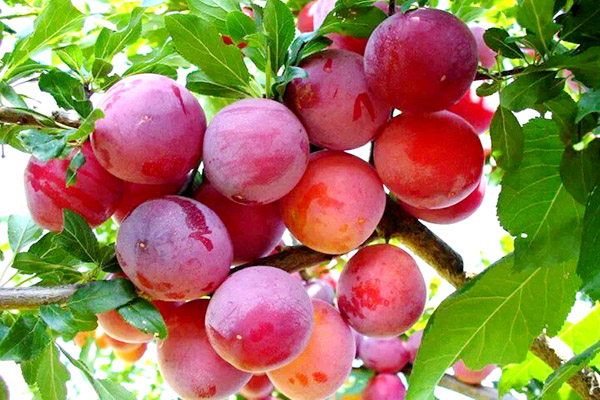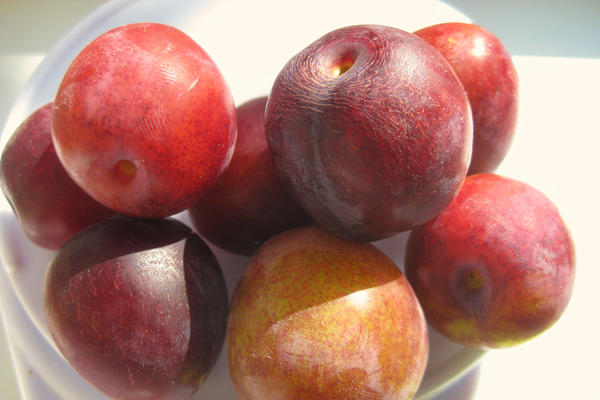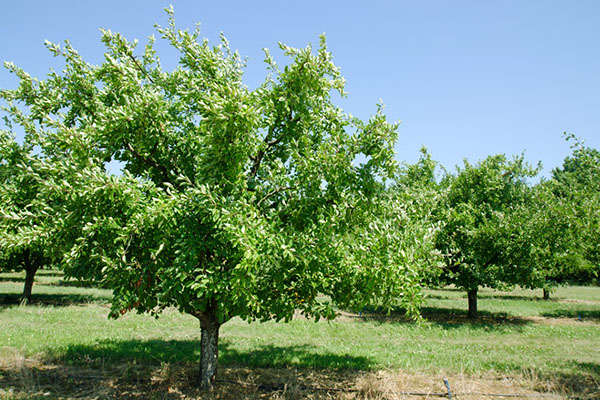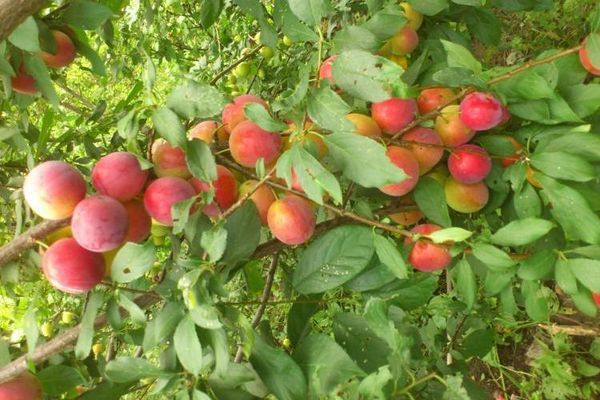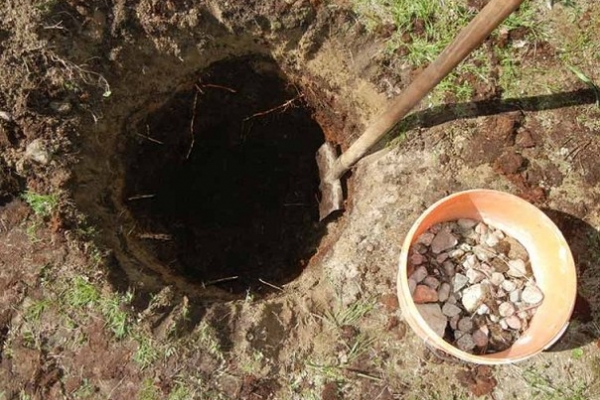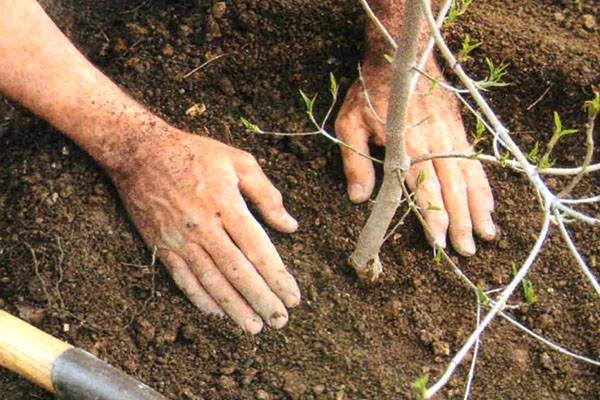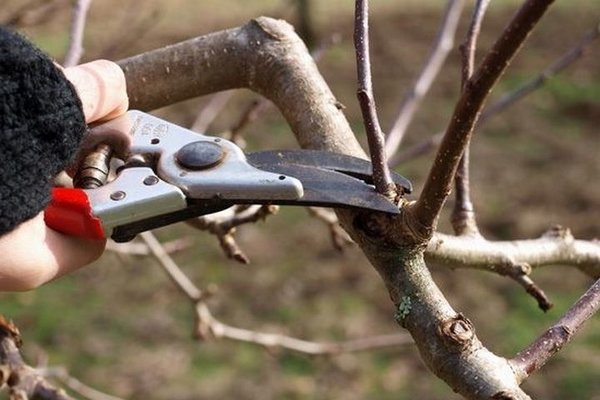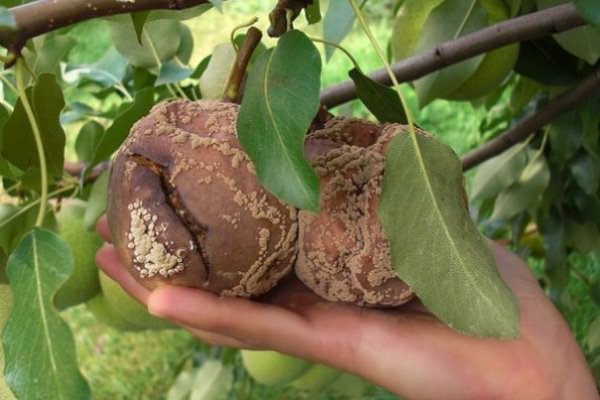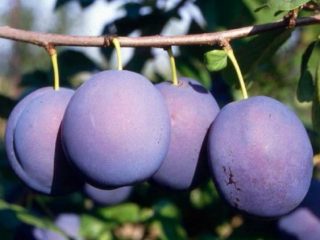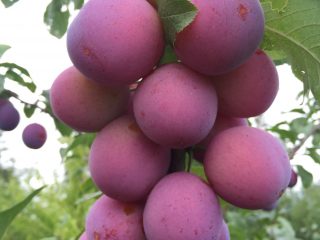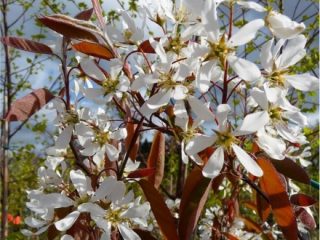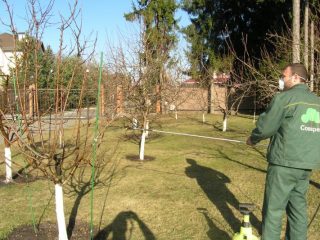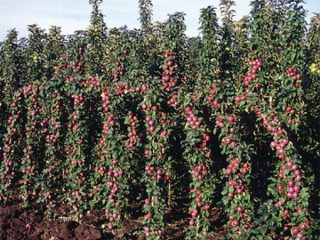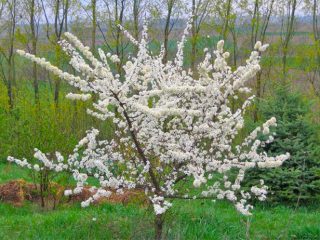Content
When choosing plums for planting, preference is often given to proven varieties. One of them is Victoria plum, widespread in Russia and European countries. The variety has earned its popularity due to its high yield and winter hardiness.
History of variety selection
Queen Victoria is an ancient plum variety of European selection. The first seedlings were obtained in England by accidental cross-pollination of various plum varieties. Initially, the variety was called Sharps Emperor.
Since 1844, this plum has been known as the Queen Victoria plum. Now the plum is widespread both in Europe and in Russia.
Description of the Victoria plum variety
Victoria plum is a medium-sized tree with a spreading, sparse, rounded crown. The shoots are thick and short, brown-green in color.
Description of Queen Victoria plum fruit:
- wide oval shape;
- weight – 30–40 g;
- red-violet color;
- white spots and waxy coating on the peel;
- yellow juicy pulp;
- the middle oval bone is freely separated from the pulp.
Plum pulp contains 10.3% sugars, 0.9% acids and 2.7 mg per 100 g of ascorbic acid. Taste quality is rated 4.2 out of 5.
In Russia, the Queen Victoria variety is grown both in the southern regions and in colder climates.
Characteristics of the variety
Before planting a variety, pay attention to its main characteristics: resistance indicators, yield, flowering periods and fruiting.
Drought resistance, frost resistance
The variety has average resistance to drought. To obtain a rich harvest, the tree is watered according to the standard scheme.
Frost resistance is at an average level. Under snow cover it can withstand harsh winters without problems. Young Victoria plum plantings need additional protection.
Pollinators of plum varieties
The Queen Victoria plum is self-fertile. Planting pollinators is not necessary to form a harvest. However, if there are other varieties of plums on the site that bloom at similar times, the yield and quality of the fruits increase.
Queen Victoria is a good pollinator for other varieties of domestic plums:
- Hungarian Azhanskaya;
- Greengage;
- Anna Shpet;
- Peach;
- Kirke.
Plum blossoms occur from mid to late May. In cold regions, the buds may be damaged by spring frosts. The harvest ripens late - from the second ten days of September.
Productivity and fruiting
The Queen Victoria plum is distinguished by its high yield, which increases when planted next to other plum varieties. The seedling enters the fruiting stage at the age of 3–4 years.
Up to 40 kg of fruits are removed from the tree. Fruiting is spread over 2 weeks.After ripening, the plum does not fall off and stays on the branches for a long time.
Area of application of berries
The fruits have universal use: they are consumed fresh, dried or processed into homemade preparations (jammies, preserves, compotes, jams).
Resistance to diseases and pests
The Queen Victoria plum is susceptible to fungal diseases that appear in cold and rainy weather. Resistance to pests is average. To protect plums from damage, preventive treatments are carried out.
Advantages and disadvantages of the variety
Main advantages of the variety:
- self-fertility;
- high quality and taste of fruits;
- the fruits do not fall off after ripening;
- universal application;
- productivity.
When choosing a Queen Victoria plum, take into account its disadvantages:
- demanding care;
- susceptibility to fungal diseases.
Landing Features
Homemade Victoria plums are planted at certain times. The choice of location for the crop determines its productivity and fruiting. Particular attention is paid to the quality of planting material.
Recommended timing
In regions with cold climates, planting work is carried out in the spring. The optimal period is after the snow melts and before the sap begins to flow. In the southern regions, planting is carried out in the fall, after the leaves have fallen. The seedling will be able to take root before the onset of cold weather.
Choosing a suitable location
The location for the Queen Victoria plum is chosen taking into account a number of conditions:
- abundant natural light;
- protection from stagnant moisture and cold air;
- groundwater depth – more than 1.5 m;
- protection of the site from the wind in the form of fences or buildings.
Plum prefers fertile soils rich in nutrients. The culture develops slowly in acidified soils.The application of fertilizers during planting helps improve the composition of the soil.
What crops can and cannot be planted nearby?
Queen Victoria plum is removed from hazel, hazel, birch and poplar at a distance of 4–5 m.
Planting next to fruit trees: pear, cherry, peach is not recommended. Crops compete for moisture and nutrients in the soil.
It is allowed to plant an apple tree next to the plum tree. Currants, raspberries or gooseberries are planted between the rows of trees.
Selection and preparation of planting material
Seedlings of the Queen Victoria variety are purchased from trusted suppliers. Your best bet is to contact your local nursery or garden center. Planting material is checked visually for the absence of broken shoots, mold and other defects.
Seedlings aged 1–2 years are selected for planting. If the roots of the tree are dry, they are immersed in clean water for 3–5 hours.
Landing algorithm
Preparation of the soil and planting pit begins at least 2-3 weeks before the start of work. During this time, the soil will shrink. If planting is carried out in the spring, then the pit is prepared in the fall.
Procedure for planting late Victoria plum:
- A hole 60 cm deep and 70 cm in diameter is dug in the area.
- If necessary, crushed stone is poured onto the bottom as a drainage layer.
- A wooden or metal stake is driven into the hole. It should rise 0.5 m above the ground.
- A mixture consisting of an equal amount of fertile soil, peat and humus is poured onto the bottom.
- After settling, soil is poured into the hole to form a small hill.
- A seedling is placed on top, its roots are straightened. There should be 3–4 cm from the root collar to the ground.
- The roots of the tree are covered with earth and watered abundantly.
- The soil in the tree trunk circle is mulched with peat.
Aftercare for plums
The Queen Victoria plum requires a lot of care. The tree is regularly watered and fed, and the shoots are pruned.
Watering the crop depends on the intensity of precipitation in the region. Watering is required during the flowering period and at the beginning of fruiting of the tree. In autumn, plums are watered abundantly before covering for the winter.
Every 3 years, when digging up the soil by 1 sq. m apply 10 kg of organic fertilizer. In early spring, plums are fed with nitrogen fertilizer, and during the growing season - with potassium and phosphorus. Substances are embedded in the soil or dissolved in water before watering.
Pruning the Queen Victoria plum helps eliminate excess shoots and normalize yields. The crown is formed in several tiers. At the beginning of spring or at the end of the season, cut out broken, frozen or dried branches.
The young tree is covered for the winter with agrofibre and spruce branches. The soil is mulched with humus or compost. For shelter, do not use polyethylene or other materials that do not allow moisture and air to pass through. To prevent the tree from being damaged by rodents, its trunk is covered with roofing felt or mesh.
Diseases and pests, methods of control and prevention
According to reviews of the Queen Victoria plum, the tree can be seriously damaged by fungal diseases. The most dangerous crop diseases are listed in the table:
Disease | Signs | Struggle | Prevention |
Fruit rot | Brown spots with gray fungal spores are noticeable on the fruits. | The affected fruits are thrown away, the tree is sprayed with Bordeaux mixture. | 1. Regular thinning of the crown. 2. Destruction of fallen leaves. 3. Preventive spraying with fungicides. |
Coccomycosis | Reddish spots on the leaves that grow and merge with each other. Leaves dry out and fall off prematurely. | Treatment of plums with copper oxychloride. |
Common crop pests are listed in the table:
Pest | Signs | Struggle | Prevention |
hawthorn | Large butterflies eat leaves, buds and flowers. | Destruction of the pest manually. Treating wood with a solution of Actellik. | 1. Digging up the soil under the tree. 2. Removing fallen leaves from the area. 3. Preventive spraying with insecticides. |
Cherry moth | Cherry moth caterpillars eat buds and leaves. | Spraying plums with a solution of the drug "Nitrophen". |
Conclusion
Victoria plum is a common variety in Europe. It is valued for its high yield and quality of fruits. The tree is demanding of care and needs protection from fungal diseases.
Reviews

